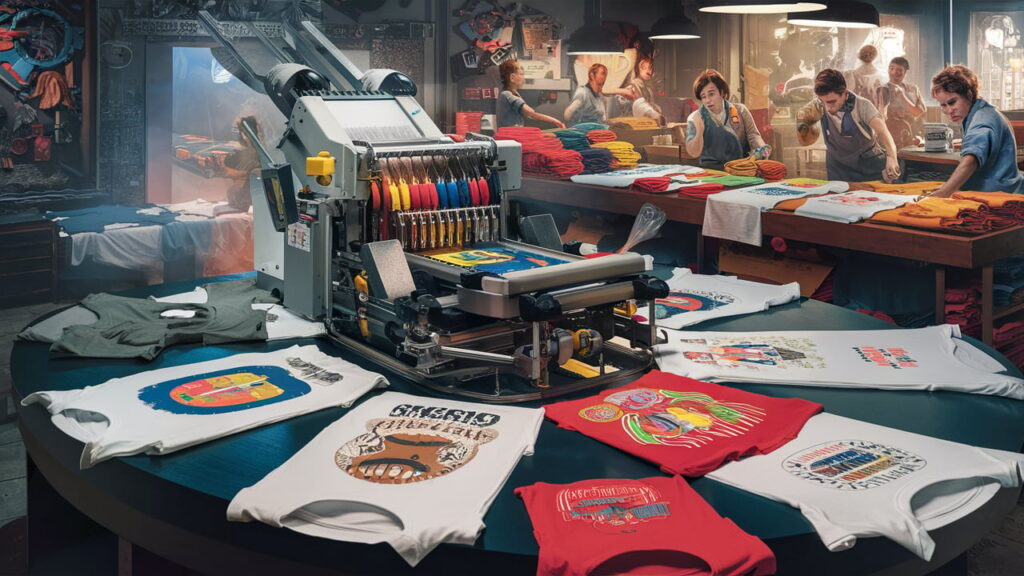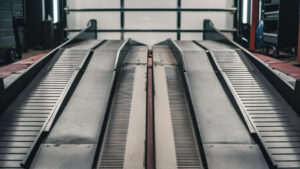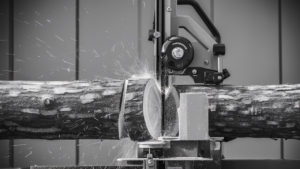Starting a custom T-shirt printing business from home can be a great way to turn creativity into profit. In just a few simple steps, you can launch your own venture and begin earning money from the comfort of your home.
The custom T-shirt market is growing fast. Many people want unique designs that reflect their personality or special events. With the right tools and a good plan, you can cater to this demand. Whether you’re a graphic designer, an artist, or someone with a passion for fashion, this guide will help you get started.
We’ll cover everything you need to know, from choosing the right equipment to marketing your products. Get ready to turn your ideas into a thriving home business.
Introduction To Custom T-shirt Printing
Starting a custom T-shirt printing business from home is a great idea. It allows you to express your creativity while making money. You can design and print shirts that people will love. This business requires minimal investment and offers high flexibility.
Benefits Of Starting From Home
Operating from home has many advantages. First, low startup costs. You do not need to rent a shop. You save money on utilities and transportation. You also have the flexibility to work on your schedule.
Another benefit is the comfort of working from your space. You can set up your equipment in a spare room or garage. This setup makes it easy to balance work and family life.
Lastly, there is the potential for growth. As your business grows, you can expand your operations. Hire more people or move to a larger space if needed.
Market Potential
The market for custom T-shirts is huge. People love personalized clothing. They wear custom shirts for events, sports teams, and businesses.
Consider these target markets:
- Schools: custom shirts for sports teams and clubs
- Businesses: branded T-shirts for employees
- Events: shirts for weddings, parties, and reunions
- Online sales: sell designs on platforms like Etsy or your website
By tapping into these markets, your business can thrive. Creative designs and quality printing will attract more customers. Keep an eye on trends and popular themes. This awareness helps you stay relevant and appealing.
Initial Planning
Starting a custom t-shirt printing business from home requires careful planning. The initial steps are crucial to set a strong foundation. Focus on identifying your niche and researching competitors to gain an edge.
Identifying Your Niche
Choosing the right niche is vital. It helps you target the right audience. Consider your interests and skills. Think about what you are passionate about. This will make your work enjoyable and sustainable.
Research popular trends in t-shirt designs. Check what people are buying. Look for gaps in the market. Find a niche that is not too crowded. This will give you a better chance to stand out. Some ideas for niches include:
- Humorous designs
- Inspirational quotes
- Sports teams and activities
- Pop culture references
- Custom family reunions or events
Researching Competitors
Understanding your competitors is essential. It helps you learn from their strengths and weaknesses. Start by identifying your main competitors. Look for businesses that target the same niche. Analyze their marketing strategies and pricing.
| Competitor | Strengths | Weaknesses |
|---|---|---|
| Competitor A | High-quality designs, strong social media presence | High prices, limited customization options |
| Competitor B | Affordable prices, wide range of products | Low-quality materials, slow delivery |
Take note of what works well for them. Avoid their mistakes. Use this information to refine your business model. Offer something unique that sets you apart.
By identifying your niche and researching competitors, you lay the groundwork for a successful custom t-shirt printing business. These steps help you create a clear vision and strategy for your new venture.
Setting Up Your Workspace
Setting up your workspace is a crucial step in starting your custom T-shirt printing business from home. A well-organized space can boost productivity and ensure smooth operations. Here’s how you can set up an effective workspace for your new venture.
Choosing The Right Space
First, choose a dedicated space in your home. A spare room or a basement works best. Ensure the area is well-ventilated and has enough natural light. This will help you focus and stay motivated. Avoid high-traffic areas to minimize distractions.
Essential Equipment
Next, gather the essential equipment for T-shirt printing. You will need a heat press machine, a printer, and transfer paper. Invest in a sturdy table to hold your equipment. A computer is also necessary for designing your T-shirts.
Don’t forget storage solutions. Shelves and bins can keep your supplies organized. This includes blank T-shirts, inks, and packaging materials. Organization saves time and reduces stress.
Finally, ensure you have a comfortable chair. You will spend hours working, so comfort is key. A good chair supports your back and helps maintain good posture.
Designing Your T-shirts
Starting a custom t-shirt printing business from home can be exciting. One of the most creative parts is designing your t-shirts. This is where your unique ideas come to life. Let’s dive into how you can create amazing designs for your shirts.
Creating Unique Designs
Your t-shirts need to stand out. Create designs that are unique and appealing. Think about what your target audience likes. Do they prefer funny quotes, artistic graphics, or simple logos? Use your creativity to come up with ideas that will catch their eye.
Start by brainstorming. Write down every idea that comes to mind. Sketch rough drafts to visualize your concepts. Don’t worry about perfection at this stage. You can refine your ideas later.
- Identify your target audience
- Brainstorm design ideas
- Sketch rough drafts
Using Design Software
Once you have your ideas, it’s time to bring them to life with design software. There are many tools available that can help you create professional-looking designs.
| Software | Features | Price |
|---|---|---|
| Adobe Illustrator | Vector graphics, professional tools | Subscription |
| CorelDRAW | Illustration, layout, and design | One-time purchase |
| Canva | Easy to use, templates | Free/Paid |
Choose a software that suits your needs and budget. Adobe Illustrator and CorelDRAW are great for detailed designs. Canva is user-friendly and good for beginners.
Once you choose your software, start practicing. Watch tutorials to learn how to use the tools effectively. Experiment with colors, fonts, and images. The more you practice, the better your designs will become.
- Choose your design software
- Learn to use the tools
- Practice and experiment
Remember, the key to great t-shirt designs is creativity and practice. Keep refining your skills and let your imagination run wild!
Printing Techniques
Starting a custom T-shirt printing business from home can be exciting. It’s important to understand the different printing techniques available. Each method has its own advantages and is suited for different types of designs and materials. Below, we will explore two popular techniques: Screen Printing and Heat Transfer Printing.
Screen Printing
Screen printing is a popular method for custom T-shirts. This technique uses a stencil, called a screen, to apply layers of ink on the printing surface.
Advantages:
- Durable and long-lasting prints
- Vibrant colors
- Cost-effective for large orders
Disadvantages:
- Not ideal for small orders
- Complex setup process
- Limited in detailed designs
Screen printing requires some initial investment in screens and inks. But once set up, it can be a cost-effective way to produce high-quality prints. This method is great for bulk orders and simple designs.
Heat Transfer Printing
Heat transfer printing is another method for creating custom T-shirts. This technique involves transferring a design onto a T-shirt using heat and pressure.
Advantages:
- Great for detailed designs
- Quick setup and easy to use
- Perfect for small orders
Disadvantages:
- Less durable than screen printing
- May crack or fade over time
- Higher cost per unit
Heat transfer printing is perfect for short runs and complex designs. It’s easy to get started with a heat press and transfer paper. This method is ideal for on-demand printing and custom orders.
Sourcing Materials
Starting a custom T-shirt printing business from home requires careful planning. One of the most critical steps is sourcing the right materials. This includes finding quality T-shirts, buying inks, and other supplies. Quality materials will ensure your designs look great and last long. Below, we dive into the details of sourcing materials for your new business.
Finding Quality T-shirts
Quality T-shirts are the foundation of your business. Look for T-shirts that are soft, durable, and comfortable. Cotton is a popular choice. It is breathable and absorbs ink well. Consider suppliers like Bella+Canvas, Gildan, and Next Level. They offer a range of sizes, colors, and styles. Buying in bulk can save money and ensure you have enough stock.
Buying Inks And Supplies
The right ink is crucial for sharp and vibrant prints. Water-based inks are eco-friendly and soft to the touch. Plastisol inks are durable and vibrant, ideal for bold designs. You will also need other supplies such as screens, squeegees, and heat presses. Find a reliable supplier who offers quality products at competitive prices. Research and read reviews to make informed decisions.
Pricing Your Products
Pricing your products can be one of the trickiest parts of starting a custom t-shirt printing business from home. It’s important to find a balance that covers your costs and provides a reasonable profit margin while still being attractive to customers.
Calculating Costs
Start by calculating all the costs associated with producing each t-shirt. This includes the cost of blank t-shirts, printing materials, and any additional supplies. Don’t forget about indirect costs like electricity and software subscriptions.
Also, factor in shipping costs if you plan to sell online. These can add up quickly and impact your profit margins. Track these expenses carefully to understand the full cost of each t-shirt.
Setting Profit Margins
Once you know your costs, decide on a reasonable profit margin. The profit margin is the percentage you add to your cost to determine the selling price. A common range for profit margins is between 30% and 50%.
Consider your target market when setting your prices. If you’re selling to budget-conscious buyers, lower margins might be necessary. For premium markets, you can aim for higher profit margins.
Test different price points to see what works best. Be flexible and ready to adjust your prices based on customer feedback and sales data.
Marketing Your Business
Marketing your custom T-shirt printing business is crucial for success. You need to reach your target audience effectively. Here are some strategies to help you market your business.
Building An Online Presence
Creating a strong online presence is essential. Start by building a professional website. Your website should showcase your designs, pricing, and contact information. Ensure the site is user-friendly and mobile-responsive.
Consider adding an e-commerce platform. This allows customers to purchase directly from your website. Use high-quality images of your T-shirts. Include detailed descriptions and size guides.
Search engine optimization (SEO) is key. Use relevant keywords in your website content. This helps improve your site’s visibility on search engines. Regularly update your blog with engaging content about T-shirt designs and trends.
Utilizing Social Media
Social media platforms are powerful marketing tools. Create business accounts on platforms like Facebook, Instagram, and Twitter. Post regularly to keep your audience engaged.
Share high-quality photos and videos of your T-shirts. Showcase different designs and styles. Use Instagram Stories and Facebook Live to give behind-the-scenes looks at your printing process.
Engage with your followers. Respond to comments and messages promptly. Run contests and giveaways to boost interaction. Collaborate with influencers in the fashion niche to reach a wider audience.
Consider using paid advertising on social media. Facebook Ads and Instagram Ads can target specific demographics. This can increase your reach and drive more traffic to your website.
Here are some key points to remember:
- Post regularly and consistently.
- Use high-quality visuals.
- Engage with your audience.
- Leverage paid advertising.
By building a strong online presence and utilizing social media effectively, you can successfully market your custom T-shirt printing business from home.
Managing Orders And Shipping
Managing orders and shipping is crucial for any custom t-shirt printing business. Quick, reliable order management and shipping build customer trust. Happy customers often become repeat buyers. Let’s explore effective ways to handle orders and shipping.
Order Management Tools
Use order management tools to keep track of sales. Tools like Shopify, WooCommerce, and Etsy can help. They offer features to manage inventory, process orders, and track customer information.
These tools also send automated emails. Customers get updates on their order status. This reduces the need for manual communication. It saves time and reduces errors.
Efficient Shipping Methods
Choose the right shipping method for your business. Compare different carriers like USPS, FedEx, and UPS. Each carrier offers various services and rates. Select the one that fits your budget and delivery times.
Consider using a shipping software. Tools like ShipStation or Shippo can integrate with your order management system. They help automate the shipping process. You can print labels, track packages, and manage returns easily.
Pack orders carefully to avoid damage. Use proper packaging materials. Secure the t-shirts to prevent wrinkles and tears. Happy customers start with receiving their orders in perfect condition.
Expanding Your Business
Starting a custom t-shirt printing business from home is an exciting venture. Once you have a strong foundation, it is time to think about growth. Expanding your business can bring new opportunities and challenges. Focus on scaling production and exploring new markets to achieve success.
Scaling Production
As demand for your t-shirts increases, scaling production becomes essential. Invest in more advanced printing equipment. This will help you produce t-shirts faster and with better quality. Consider hiring additional staff. They can assist with printing, packaging, and shipping.
Implement efficient workflows. Streamline your processes to save time and reduce costs. Use software to track orders and manage inventory. This will help you stay organized and meet customer expectations. Remember, happy customers lead to repeat business.
Exploring New Markets
Expanding into new markets can drive growth. Research potential markets and identify target customers. Look for trends and preferences in different regions. Tailor your designs to appeal to these new audiences.
Utilize online platforms to reach a wider audience. Sell your t-shirts on popular e-commerce websites. Create social media accounts to promote your brand. Engage with potential customers and build a loyal following. Participate in local events and fairs to showcase your products.
Collaborate with influencers or local businesses. They can help you reach new customers. Offer promotions or discounts to attract first-time buyers. Expanding your market presence will increase your sales and brand recognition.

Frequently Asked Questions
How Do I Start A T-shirt Printing Business?
Starting a T-shirt printing business involves planning, sourcing materials, and buying equipment. Create designs, set up an online store, and market your products.
What Equipment Do I Need For T-shirt Printing?
You’ll need a heat press, printer, transfer paper, and blank T-shirts. Consider investing in design software for creating unique graphics.
How Much Capital Is Required To Start?
Starting a T-shirt printing business from home typically requires a few hundred to a few thousand dollars. It depends on your equipment and materials.
Can I Run A T-shirt Printing Business From Home?
Yes, a T-shirt printing business can be successfully run from home. Ensure you have enough space for equipment and materials.
Conclusion
Starting a custom T-shirt printing business from home is within reach. Follow the steps shared in this blog. Invest in quality equipment. Learn design skills and trends. Build a strong online presence. Market your products effectively. Keep improving your craft.
Engage with your customers. Watch your business grow. Remember, patience and dedication are key. You can succeed in this venture. Happy printing!








